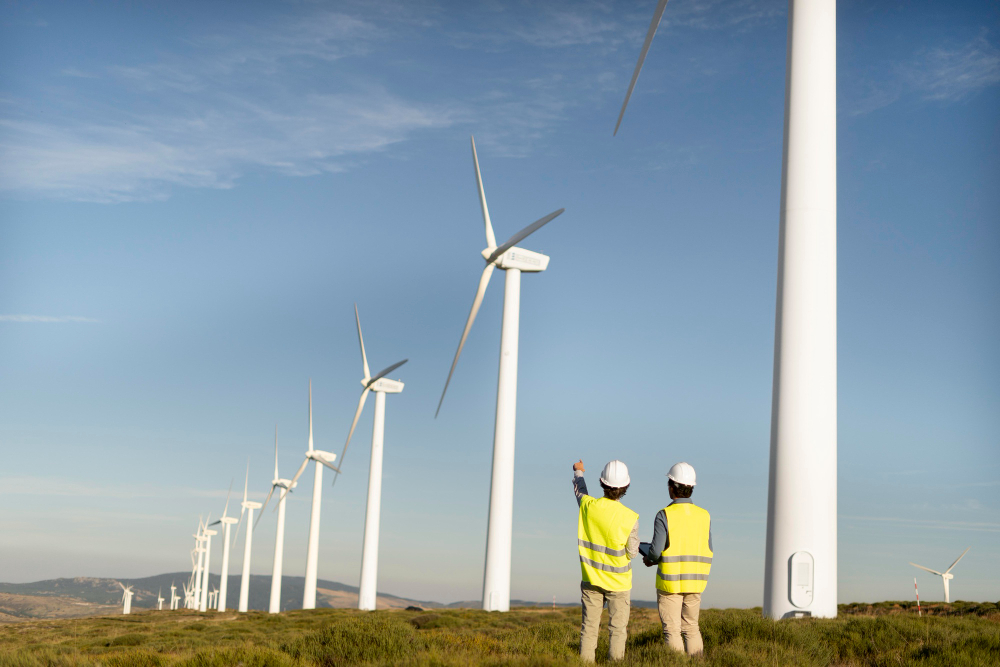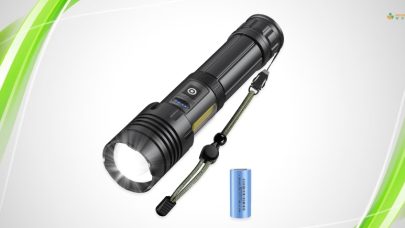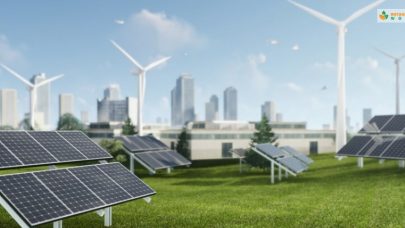The whirring blades of wind turbines on the horizon have become iconic symbols of renewable energy and sustainable power generation. Wind energy, harnessed through the ingenious design of wind turbines, has emerged as a key player in the transition toward a greener and more sustainable future.
In this comprehensive article, we will dive right into the world of wind turbines, exploring the fundamental principles behind their operation, the different types of wind turbines, and the impact of this technology on the global energy landscape.
Understanding Wind Turbines
Basic Working Principles
A wind turbine is a device that converts the kinetic energy of the wind into mechanical energy, which is transformed into electrical energy. The basic components include the rotor (blades), the nacelle (housing the generator and gearbox), the tower, and the control system.
Wind Energy Conversion
As the wind blows, it causes the rotor blades to spin. This rotational motion is transferred to the generator inside the nacelle, where it is converted into electricity. The control system adjusts the blade pitch and rotor speed to optimize energy capture and ensure the turbine operates within safe parameters.
Different Types of Wind Turbines
Horizontal Axis Wind Turbines (HAWT)
Horizontal Axis Wind Turbines are the most common and widely used type of wind turbine. Their design features a horizontal rotor shaft, and the blades are positioned like the spokes of a wheel. Key characteristics include:
Advantages
- Higher efficiency to the optimal alignment with prevailing winds.
- Easier maintenance as key components are located closer to the ground.
Disadvantages
- Larger footprint to vertical axis turbines.
- Height restrictions to transportation considerations.
Vertical Axis Wind Turbines (VAWT)
Vertical Axis Wind Turbines have a rotor shaft that runs vertically, perpendicular to the ground. This type of turbine can be categorized to various designs, like Savonius, Darrieus, and helical turbines. Key characteristics include:
Advantages
- Suited for locations with turbulent or changing wind directions.
- Lower wind startup speeds.
Disadvantages
- Lower efficiency to HAWT.
- More challenging maintenance to elevated components.
Savonius Wind Turbines
Savonius turbines have a simple design with curved blades resembling the shape of an “S.” They are suitable for low wind speeds and can start rotating at wind speeds as low as 2 m/s. They are less efficient other types, their robustness and simplicity make them suitable for certain applications.
Darrieus Wind Turbines
Darrieus turbines feature vertically aligned, airfoil-shaped blades that resemble the petals of a giant spinning flower. This design allows them to capture wind from any direction, making them suitable for urban environments with turbulent winds. They often require external power sources to start rotating.
Helical Wind Turbines
Helical turbines, known as Gorlov turbines, have helical (twisted) blades. This design is highly effective in capturing wind energy from any direction and is employed in aquatic environments like rivers or tidal zones.
Factors Influencing Wind Turbine Performance
Wind Speed
Wind speed is a critical factor influencing the performance of a wind turbine. Higher wind speeds result in increased energy production. Wind turbines typically have a rated wind speed at which they achieve maximum efficiency.
Height Above Ground
The height of the turbine above ground level is crucial for capturing stronger and more consistent winds. Taller towers allow turbines to access higher wind speeds, thereby increasing energy production.
Blade Length and Design
The length and design of the turbine blades impact energy capture. Longer blades have a larger sweep area and can capture more wind energy. The aerodynamic design of the blades plays a role in efficiency.
Geographical Location
The geographical location of a wind turbine site determines the prevailing wind patterns and speeds. Coastal areas and elevated regions often provide optimal conditions for wind energy generation.
Temperature
Wind density varies with temperature, and colder air tends to be denser. Wind turbines in colder climates may experience increased energy production to the higher density of the air.
Advancements in Wind Turbine Technology
Increased Turbine Size
One notable trend in wind turbine technology is the increase in turbine size. Larger turbines with higher hub heights and longer blades can capture more wind energy and operate at higher efficiency levels.
Smart Wind Turbines
Smart technologies, including sensors and data analytics, are being integrated into wind turbines to optimize performance. These systems monitor wind conditions, adjust turbine settings in real time, and facilitate predictive maintenance.
Floating Wind Turbines
Floating wind turbines represent an innovative approach to harnessing wind energy in deep-sea environments. These turbines, anchored to the seabed by cables, open up new possibilities for offshore wind farms in areas with deep waters.
Vertical Axis Turbines for Urban Environments
Vertical axis turbines, with their ability to capture wind from any direction, are gaining attention for urban applications. These turbines can be integrated into city landscapes, providing localized renewable energy.
Composite Materials
The use of advanced composite materials in turbine blades is improving efficiency and durability. These materials offer a balance between strength and flexibility, enabling the design of longer and more efficient blades.
Challenges and Considerations
Intermittency and Variability
Wind energy is inherently intermittent and variable. The challenge lies in balancing the fluctuations in energy production and ensuring a reliable and consistent power supply to the grid.
Land Use and Aesthetics
Large wind farms require significant land areas, leading to concerns about land use. The visual impact of wind turbines on landscapes has sparked debates about their aesthetic implications.
Noise Pollution
Wind turbines can generate noise, primarily from the rotation of blades. Modern turbines are designed to minimize noise, concerns about the impact on local communities persist.
Wildlife Impact
Wind turbines can pose risks to wildlife, birds and bats. Ongoing research aims to mitigate these impacts through improved siting and design considerations.
Global Impact and Future Outlook
Global Expansion of Wind Energy
Wind energy has experienced remarkable growth globally, with numerous countries investing in wind power as part of their renewable energy portfolios. Offshore wind projects, are gaining traction.
Economic Viability
Advances in technology, with decreasing costs, improved the economic viability of wind energy. Wind power is becoming increasingly competitive with conventional forms of electricity generation.
Policy and Regulatory Support
Government policies and regulatory frameworks play a crucial role in promoting wind energy adoption. Incentives, subsidies, and targets for renewable energy have encouraged the development of wind projects worldwide.
Wrapping Up!
Wind turbines are a great way to produce electricity without the use of any fossil fuel. In terms of sustainability and green energy, there is nothing better wind turbines to generate electricity. If you think this article was helpful, give it a like and comment below.
Read more…
Types Of Renewable Resources: The Future Of Energy
How Does A Nuclear Power Plant Work?














